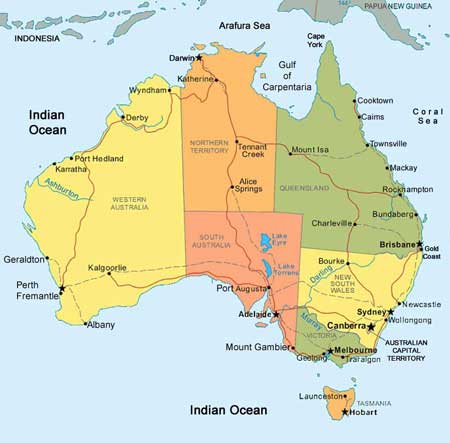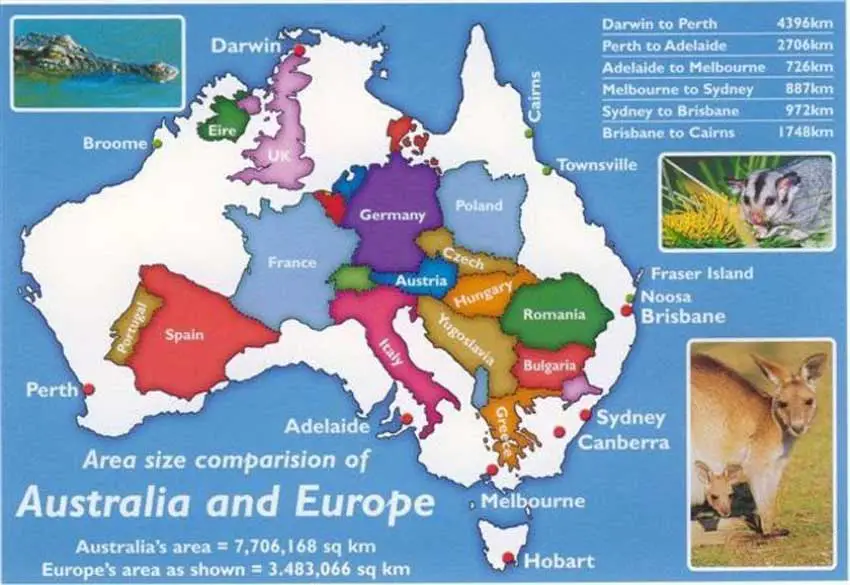Australia is the world’s sixth largest country, after Russia, Canada, China, USA, and Brazil. In addition to the mainland, Australia is surrounded by many thousands of small fringing islands and numerous larger ones, which amount to an area half the size of Tasmania. Area shown in square kilometres. States and territories are listed from the largest to smallest.
Percentage of total area: 33.0%
Mainland area: 2,526,786
Island area: 3,089
Total area: 2,529,875
Percentage of total area: 22.5%
Mainland area: 1,723,936
Island area: 6,712
Total area: 1,730,648
Percentage of total area: 17.5%
Mainland area: 1,335,936
Island area: 13,387
Total area: 1,349,129
Percentage of total area: 12.7%
Mainland area: 978,810
Island area: 4,672
Total area: 983,482
Percentage of total area: 10.4%
Mainland area: 800,628
Island area: 14
Total area: 800,642
Percentage of total area: 3.0%
Mainland area: 227,010
Island area: 404
Total area: 227, 416
Percentage of total area: 0.9%
Mainland area: 64,519
Island area: 3,882
Total area: 68,401
Percentage of total area: less than 1%
Mainland area: 2,358
Island area: nil
Total area: 2,358
Percentage of total area: less than 1%
Mainland area: 72
Island area: 1
Total area: 73
Percentage of total area: 100%
Mainland area: 7,659,861
Island area: 32,163
Total area: 7,692,024
Australia is responsible for administering seven external territories – Norfolk Island, the uninhabited Coral Sea Islands Territory, the Cocos (Keeling) Islands, Christmas Island, the uninhabited Ashmore and Cartier Islands Territory, the Territory of Heard Island and the McDonald Islands in the sub-Antarctic and the Australian Antarctic Territory.










